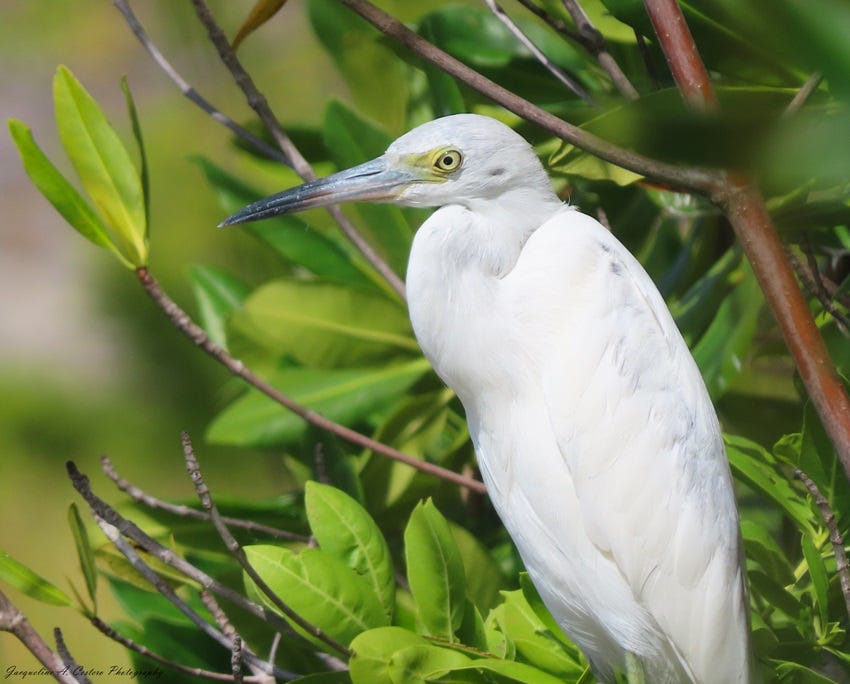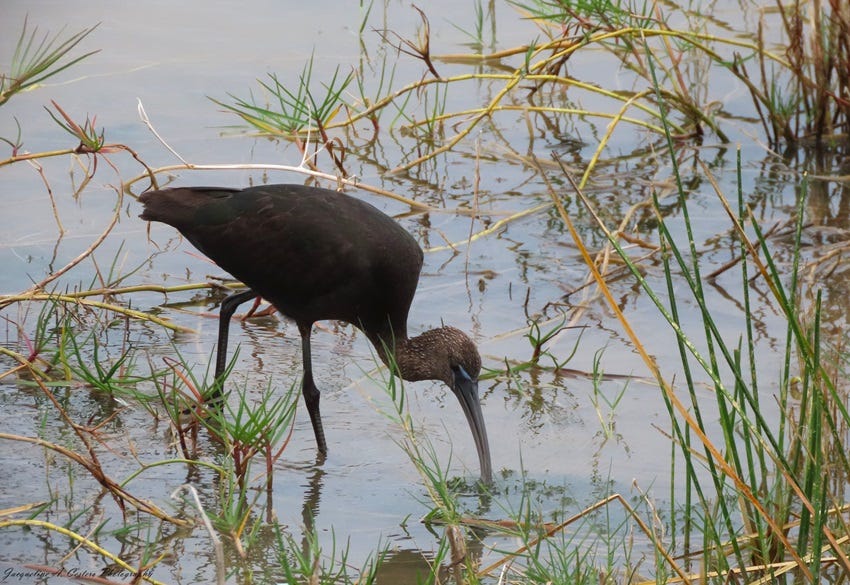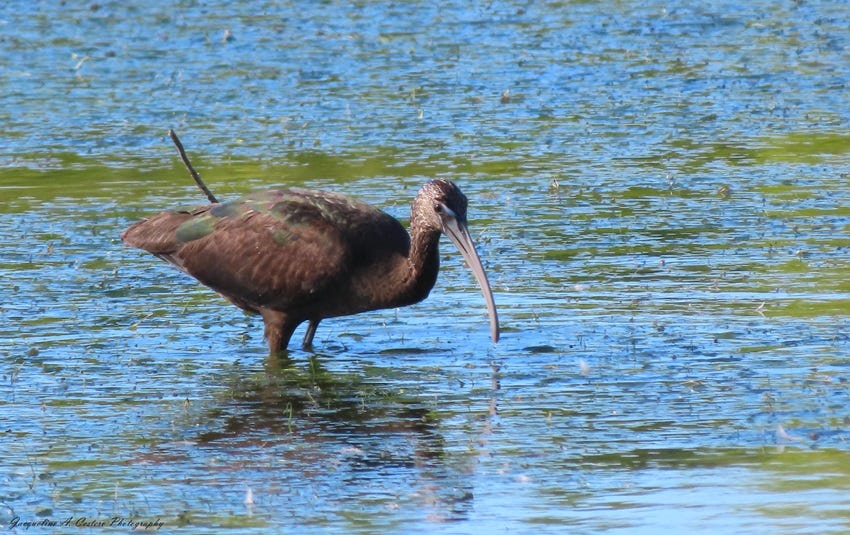From January 14 to February 3, 2024, I participated in the Fifteenth Annual Caribbean Waterbird Census. Visiting salt ponds and beaches across Anguilla, I record 63 different species of birds.
Birds Caribbean explains the importance of the census as follows:
“The Caribbean is home to over 185 species of waterbirds, including a number of endemic and globally threatened species and many migrants. The data you help us collect in this ongoing, standardized survey is essential for helping us understand how to best conserve this exceptional group of birds and manage their habitats.”
In addition to the beautiful juvenile Little Blue Heron above, I was excited to see Glossy Ibis at two different locations.
Birds of the World tells us the following:
“The Glossy Ibis is a medium-sized, dark wading bird with a long, decurved bill, an appearance responsible for the common name "black curlew." In good light, the plumage is metallic bronze with a striking green tinge.
This cosmopolitan species is the most widespread ibis species, with populations in Central and South America, the Greater Antilles, southern Europe, Africa, Asia, India, and Australia. In North America, it is restricted to eastern regions from New Brunswick through Florida and Louisiana and sporadically inland.”
Although this species is considered a rare visitor to Anguilla, I see at least one bird annually. In addition to the birds seen during this count, an individual bird was reported killed by a raptor.
I was lucky to spend some excellent moments with a pair on East End Pond over several days. I enjoyed watching them use that massive bill to feed on Fiddler Crabs in the pond. You can observe those special moments in the companion reel below.
Over the next few weeks, I will share other waterbird species that appeared during the count.








So nice Jackie to watch your videos and feel part of Anguilla for a few minutes, great work!!!
Great stuff Jackie. Have there been any more colour ringed Turnstones at Sandy Ground?